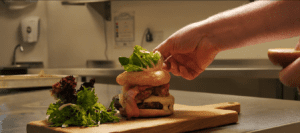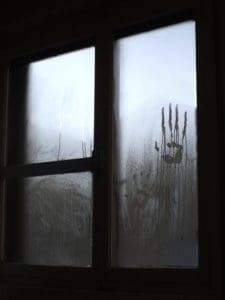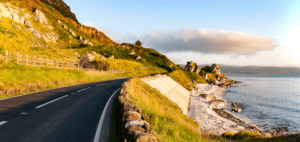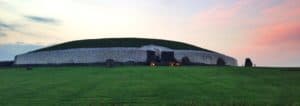The Call of the Wild: Exploring Irish Natural Landscapes and Cultural Myths
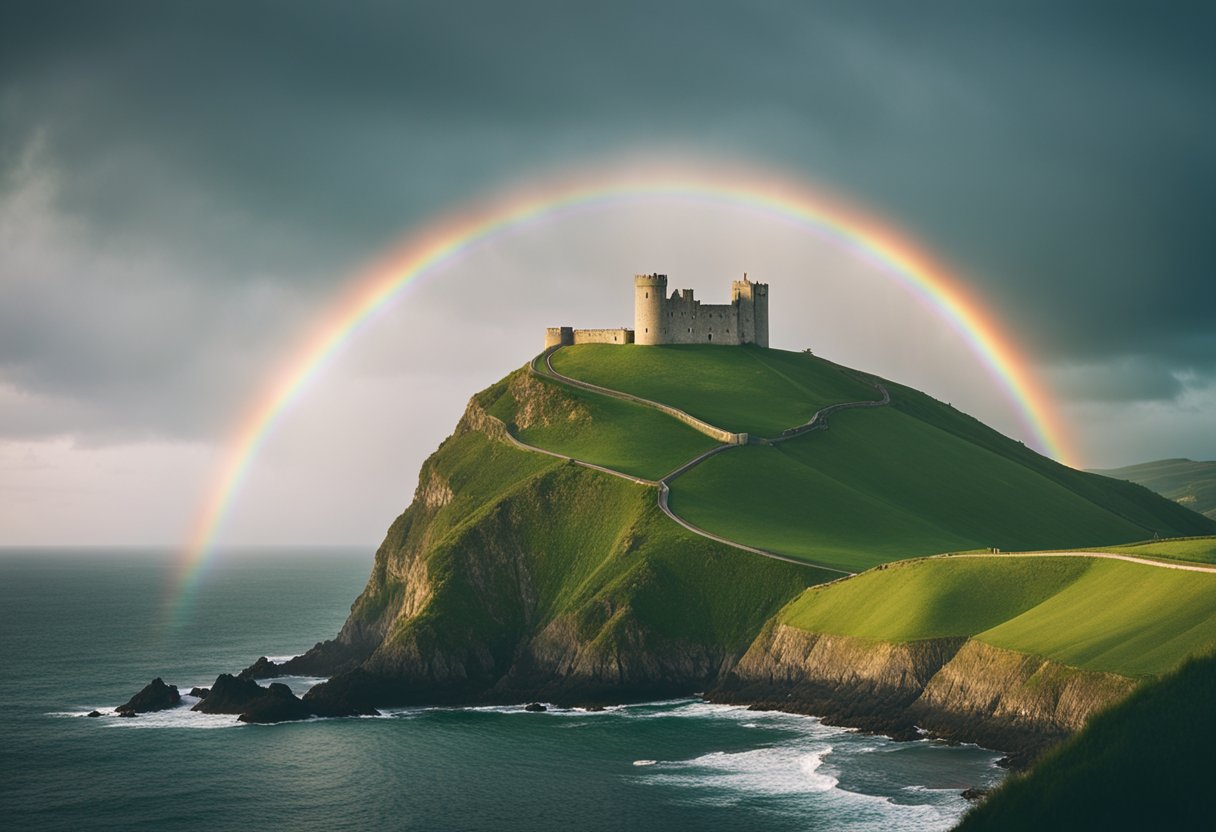
Updated On: April 23, 2024 by Eman Sameh
The “Call of the Wild” resonates through the lush Irish landscapes, wherein lies rich cultural myths waiting to be unravelled. Our relationship with nature often blurs into the mystical realm, where mythology becomes entrenched within the scenic vistas of Ireland. These natural landscapes are not just wonders to behold; they are also the silent custodians of Ireland’s ancient stories, its mythological characters, and the profound cultural expressions that have emanated from these myths.
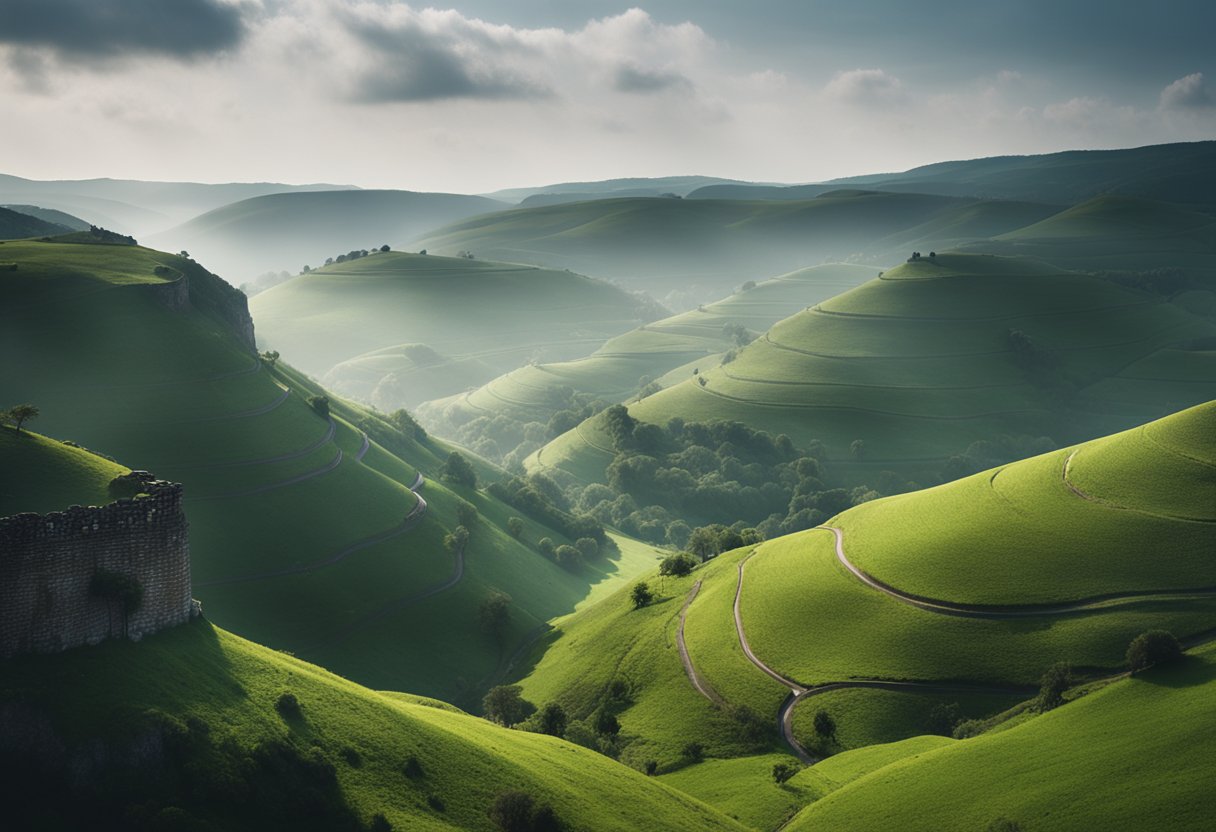
As we delve into these elements, we realise that the interconnection of landscape and myth does more than narrate tales; it shapes an entire cultural identity. Irish natural landscapes, imbued with mythological significance, offer a gateway into understanding how the populace has interacted with and been influenced by nature. It’s a narrative that explores the sacred and the every day, merging the reverence for nature’s power and beauty with the societal structures that myths have helped to forge.
Through Ireland’s myths, we encounter a world where sacred fires ignited the imagination, and tales of life, death, and aftermath offered meaning to the mysteries of existence. This collective folklore not only reflects an environmental consciousness but also resonates with the contemporary Irish identity, creating an ongoing dialogue between the past and present.
Exploring the Irish Call of the Wild
Our journey through Ireland reveals a tapestry of natural landscapes that are as varied as they are stunning. Each region presents its own unique character, shaped by centuries of folklore and the natural forces that have sculpted the land.
The Wilds of Ireland and Their Significance
The raw beauty of Ireland’s wilderness is profound. It’s a place where the forces of nature converge to create landscapes that are not only visually breathtaking but also rich in cultural history. From the roaring Atlantic waves crashing against the Cliffs of Moher to the mysterious basalt columns of the Giant’s Causeway, these sites are more than just scenic vistas; they are canvases that tell the story of Ireland’s geological and mythological past.
Each rugged coastline, mountain pass, and rolling green hill seems touched by a bit of Irish myth, where every rock and stream is the subject of an ancient fable or legend, such as the legendary sea stack Dun Bristé at Downpatrick Head, which was purportedly split from the mainland by the hands of St. Patrick himself.
Regional Variations of Natural Landscapes
The Wild Atlantic Way stretches along the west coast of Ireland, offering a diverse range of ecosystems from the lunar landscape of The Burren to the salt-sprayed inlets of Clew Bay.
In contrast, the Ancient East boasts lush green pastures and dense woodlands, deeply entrenched in Ireland’s rich history and folklore.
While the Northern Headlands are known for their dramatic sea cliffs, including Slieve League, among the highest in Europe, the Southern Peninsulas present softer, though no less awe-inspiring scenery. They have tranquil lakes like those in Killarney framed by picturesque mountain ranges.
By exploring these contrasting regions, we gain a deeper appreciation for Ireland’s multifaceted natural world and its significance to the cultural heritage that underpins Irish identity. Each landscape, with its inherent qualities, contributes to the collective image of Irish nature, from the rugged wilderness of remote headlands to the serene beauty of the countryside.
Cultural Myths and Their Roots
Ireland’s natural landscapes are steeped in cultural myths that form an integral part of the national identity. These tales have been preserved through an enduring oral tradition and have been influenced profoundly by historical shifts, particularly the advent of Christianity.
Celtic Mythology and Its Impact
Celtic mythology has bequeathed us a treasure trove of tales that intertwine with Ireland’s natural landscapes. Mythical entities such as the Tuatha Dé Dannan represent a pantheon of deities whose sagas echo the country’s rolling hills and rugged coastlines. These supernatural beings are said to embody natural phenomena, reflecting the Celtic reverence for the earth. Ireland’s enduring cultural myths are a testament to the Celts’ deep connection with nature, one that transcends mere stories and seeps into the very fabric of Irish identity.
Enshrined in texts such as the “Book of Invasions,” these myths were primarily relayed through an oral tradition whereby stories were recounted rather than written—a practice that allowed for the adaptation and evolution of tales over generations.
The Influence of Christianity on Irish Myths
The conversion to Christianity was a turning point for Irish culture and its mythology. Early Christian monks recorded previously oral tales, thus forever altering them. These scribes not only transcribed but also Christianised Irish myths, giving rise to stories that were an amalgamation of pagan legacy and Christian doctrine. This intersection between the old and new beliefs created a unique tapestry of folklore that continues to shape Ireland’s cultural identity.
One sees this synthesis in saints’ lives that bear semblances to Celtic deities, showing that while the medium of these myths evolved from spoken word to script, the essence of Ireland’s rich folklore endured, reaffirming the country’s collective beliefs and values through a blend of the spiritual and the mythological.
Mythological Characters and Their Stories
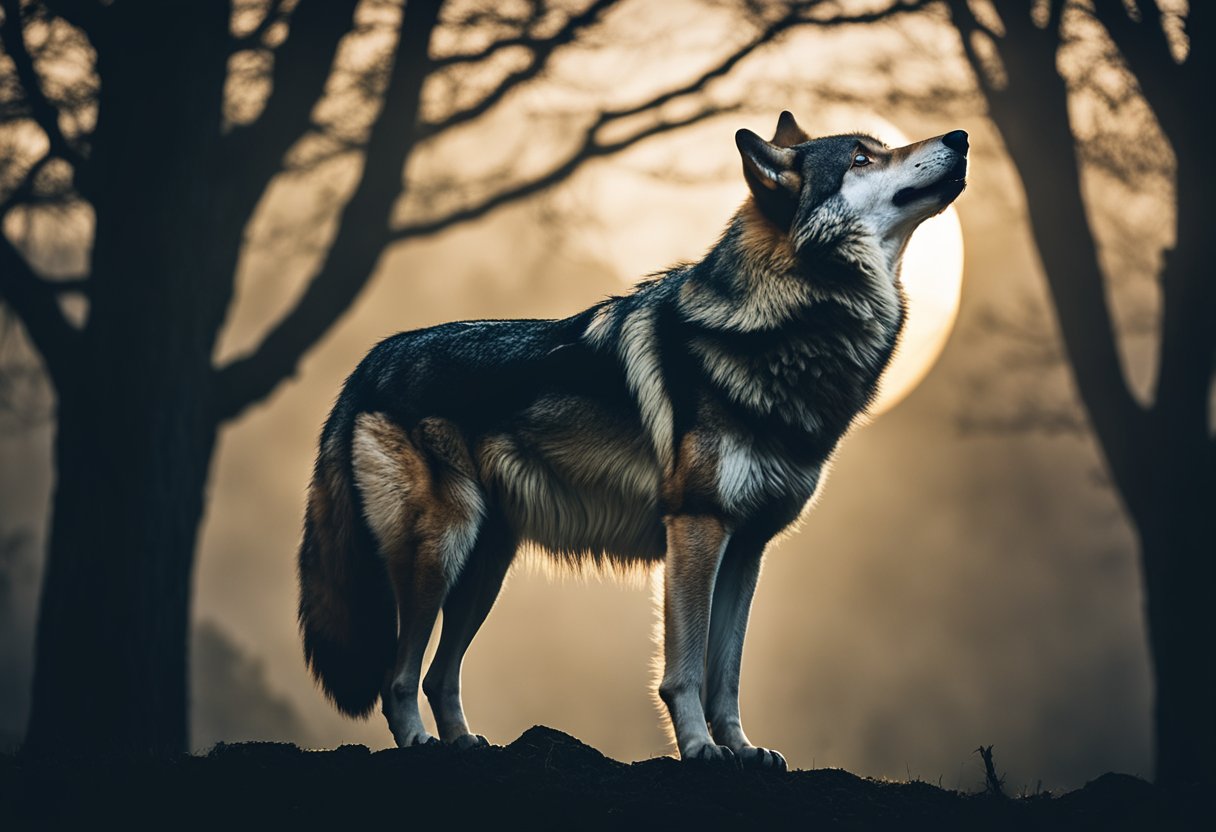
Irish landscapes are remarkable not just for their beauty but also for the myriad of stories they’ve inspired. These tales have breathed life into our understanding of our ancestors and the natural world.
Legends of Cú Chulainn
Cú Chulainn stands as one of the greatest warrior figures in Irish mythology, often equated with the might and ferocity of a divine champion. Reputedly the nephew of King Conor of Ulster, his legendary exploits are central to the Ulster Cycle. He is most famed for his powerful rage in battle, which transformed him into an unstoppable force, and his single-handed defence of Ulster in the epic Táin Bó Cúailnge.
Tales of the Children of Lir
The tragic Tales of the Children of Lir are steeped in the potent magic of Irish folklore. Cursed by their jealous stepmother to spend 900 years as swans, this enchanting myth embodies themes of love, betrayal, and enduring family bonds. Their story reminds us of the inspiration nature lays at the doorstep of our rich tapestry of myths.
The Cailleach: Ireland’s Divine Hag
Ancient tales tell of The Cailleach, a shape-shifting deity embodying the harshness of winter and the stark beauty of the landscapes she roamed. As a divine hag, she is an elemental force, considered by many to be an ancestor spirit and one of the most ancient Irish mythological characters. Her stories are interwoven with the changing seasons and the shaping of the land itself, marking her as a powerful figure of Irish mythology.
Interconnection of Landscape and Myth
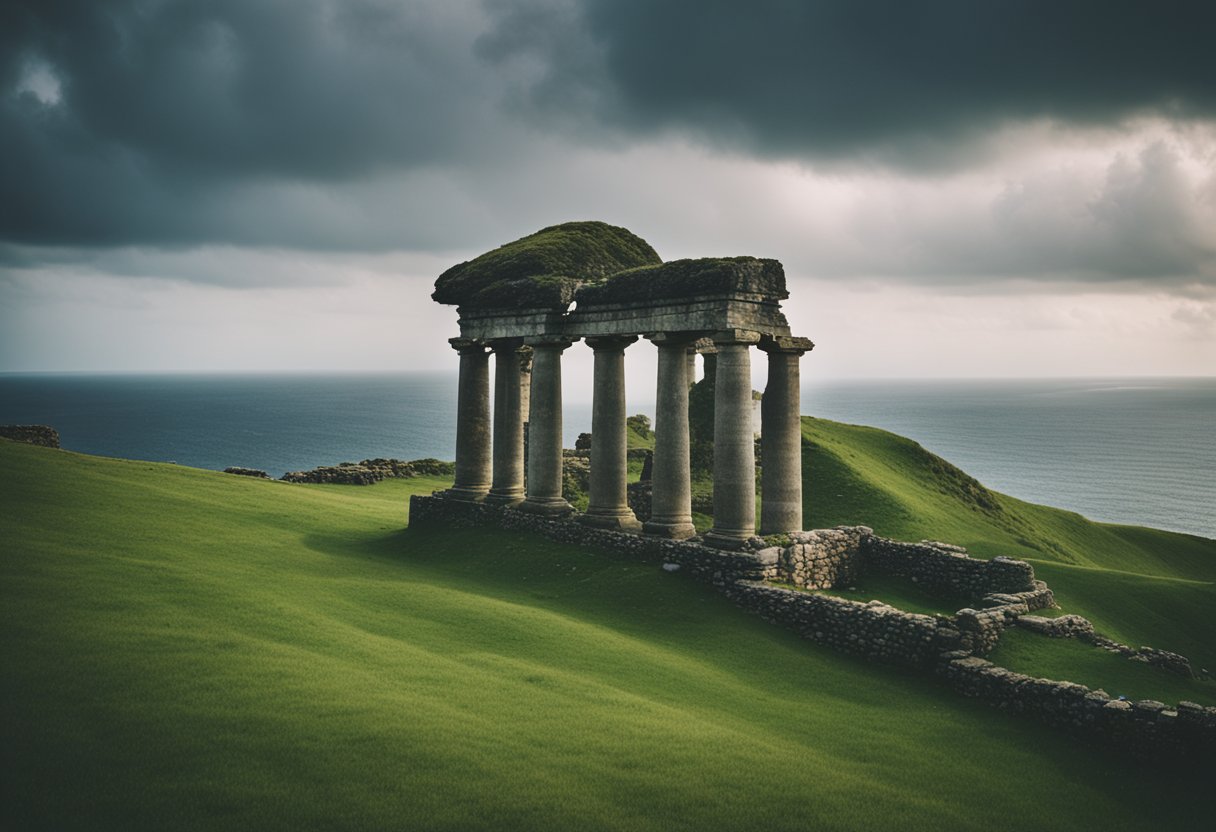
In Irish culture, the natural landscape is inseparably woven into the vibrant tapestry of mythology and folklore. Our storytelling tradition reflects this deep-seated interconnection, where every hill, lake, and forest is steeped in tales of ancient heroes and mystical creatures.
Natural Landmarks in Irish Folklore
Ireland’s landscapes are as storied as they are beautiful, with many natural landmarks acting as focal points for enchanting tales of yore. The Giant’s Causeway, for instance, is not just a geological wonder but also the setting for legendary battles and feats attributed to the giant Finn McCool. In these stories, his actions are often seen as metaphors for natural events, tying the physical landscape to the mythical narrative.
Moving beyond the Causeway, many of our mountains and rivers carry names linked to gods and goddesses, signifying their importance in the context of fertility and rebirth. For instance, the River Boyne is named after the goddess Boann, whose waters are said to possess life-giving qualities.
Symbolism of Animals and Nature in Myths
In Irish myth, animals often symbolise deeper qualities and embody the transformative power of nature. Take the salmon of knowledge, for example, which encapsulates wisdom and the fruits of the natural world. The reverence for animals is evident in the many tales that feature shape-shifting, where gods and heroes transform into various creatures, reflecting a connection between the human and animal realms.
Furthermore, these stories frequently highlight themes such as transformation and rebirth, underpinning the belief that nature and everything within it is part of a perpetual cycle of life, death, and renewal. The stags, crows, and hawks that populate our myths are not just animals; they are symbols of the enduring spirit of the landscape and its people.
Cultural Expressions of Irish Myths
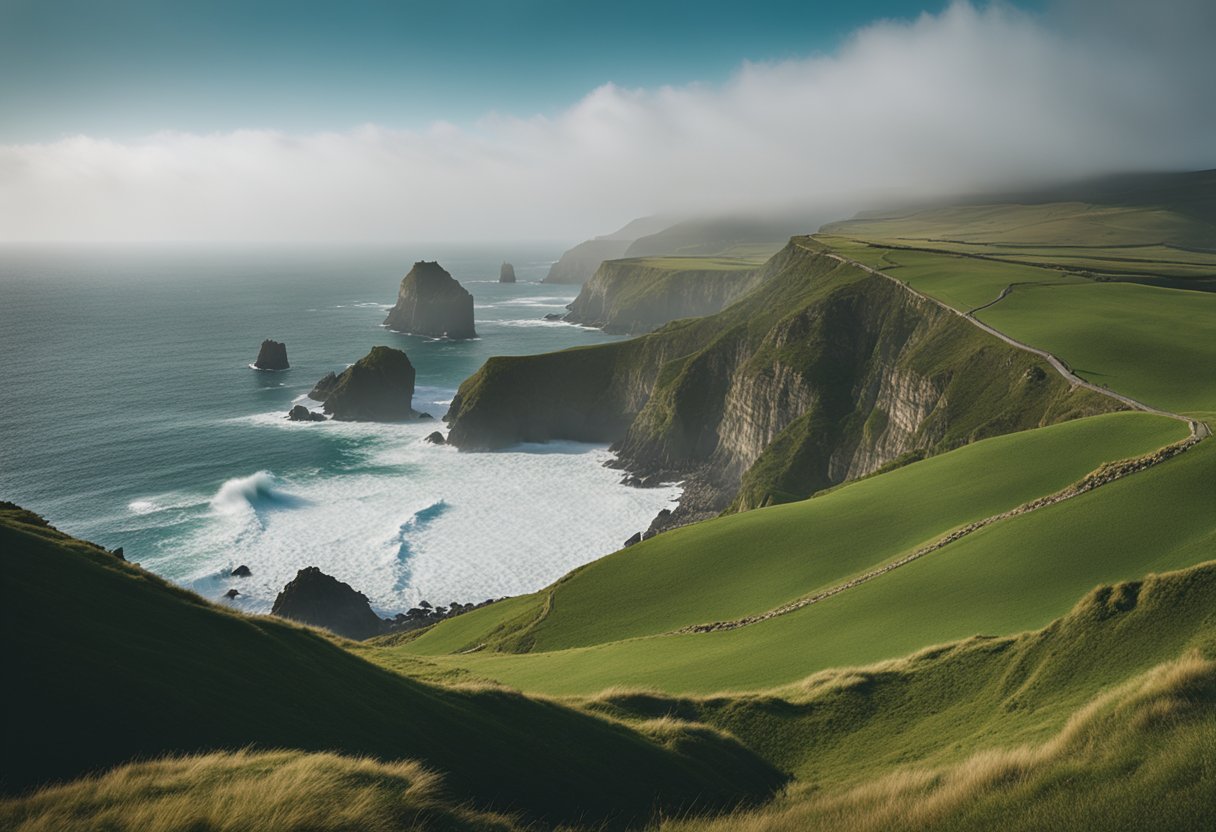
In traversing the rich tapestry of Irish culture, we discover an enduring legacy. Irish myths have seamlessly woven themselves into the fabric of everyday life and artistic expression, bridging the ethereal with the tangible.
Artistic Representations in Irish Tradition
The profound connection between Irish culture and mythology manifests in a multitude of art forms. From the ancient high crosses adorned with Celtic designs to the intricate illustrations found in medieval manuscripts like the Book of Kells, these works of art are more than mere aesthetics; they’re visual narratives. These carvings and illustrations often depict seminal events and figures from Irish folklore, serving as an immortalisation of the beliefs and customs indigenous to the island.
In modern times, our artists continue to draw inspiration from these myths. Paintings, sculptures, and installations frequently celebrate characters like the noble Cú Chulainn or the mystic sovereignty goddess Macha. Every brush stroke and chisel mark embodies a piece of the mythic past, reminding us of the enduring influence of our legends on contemporary Irish art.
Literature and Myth: Irish Fiction’s Foundation
The wellspring of myth has long nourished the realm of Irish literature, with stories handed down through generations laying the groundwork for many literary masterpieces. James Joyce and W.B. Yeats, among other luminaries, infused their works with the substance of myth, intertwining old tales with new narratives to reflect the complex identity of Ireland.
These stories have served as a source of inspiration and have also been a medium for exploring and critiquing contemporary Irish culture. Through fiction, we grapple with myth as both a mirror and a lens, using it to examine societal norms and to question our collective beliefs. It is a testament to the flexibility and vitality of our mythology that it remains relevant, providing a rich vein of material for our writers to mine and enrich the tapestry of Irish fiction.
Irish Myths and Social Structures

Irish mythology isn’t just a series of tales about gods, monsters, and heroes; it’s a lens through which we can view the ancient social structures and cultural values of Ireland. These stories served as more than mere entertainment—they were didactic tools, ingrained with wisdom and lessons that defined the fabric of early Irish society.
Lessons and Values Derived from Mythology
Irish myths were often imbued with wisdom and infused with lessons that helped to guide communal and individual behaviour. These narratives frequently extolled virtues such as honour, bravery, and loyalty, which were highly regarded in society. For example, the mythical hero Cú Chulainn embodies courage and prowess, his legend providing a template for the cultural values of the warrior class. These stories also reinforced the importance of the natural world and its protection, resonating deeply with the Irish connection to their land.
- Honour and Respect: Tales such as The Exploits of Fionn mac Cumhaill taught the value of respect amongst peers and the importance of honouring one’s word.
- Hospitality: Generosity and hospitality are recurring themes found in stories like that of Bres and the Tuatha Dé Danann, reminding all of the cultural significance of being a gracious host.
- Community: Myths reinforced the value of community and collaboration, illustrating through various fables that every member of society has a significant role to play.
Mythology’s Role in Shaping Irish Class Systems
The societal structures of ancient Ireland were deeply intertwined with mythology. Kings and warriors were often depicted as semi-divine beings with close ties to the gods, legitimizing their position within the class system. These tales also provided a foundation for the division of labour and societal roles, illustrating that each stratum, from kings to commoners, was vital to the well-being of the culture as a whole.
- Royalty and Leadership: Many kings in mythology, such as the renowned High King Brian Boru, were often seen as chosen by the gods, which reinforced their authority in the class system.
- The Warrior Class: Stories of heroic feats by warriors propagated the ideal of the noble fighter, cementing this class’s social standing.
- Druids and Poets: Druids and poets, often ascribed magical abilities in myth, held significant influence, underscoring their respected places in society.
Through these myths, Irish culture communicated the beliefs and societal wisdom that were foundational to its structure and values. From respecting nature and the land to upholding social beliefs and reinforcing class hierarchies, Irish mythology remains a powerful testament to the cultural fabric of the past.
Sacred Fire in Irish Lore
In Irish culture, fire is not only a primal force of nature but also a central symbol in many myths and customs, reflecting significant cultural values.
Rituals and Symbolism of Fire in Irish Culture
Fire in Irish tradition is a powerful symbol, embodying notions of transformation, purification, and enlightenment. The reverence for fire is evident in celebrating festivals such as Bealtaine, marking the beginning of the summer pastoral season. During Bealtaine, it was customary to light bonfires as a protective ritual and a means to bless the people and their livestock.
Customs such as the Bealtaine fires speak to a broader appreciation of nature within Irish culture. Legends often portray fire as a sacred element given by the gods, playing a pivotal role in tales where heroes are granted wisdom or passage by their might.
Throughout Irish history, fire has been central to communal gatherings and celebrations, acting as a cornerstone of social and ceremonial meetings. These events would frequently occur around bíle trees, recognised as ancient, venerable beings in themselves, with the sacred fires kindled among their roots.
Life, Death, and Aftermath in Myths
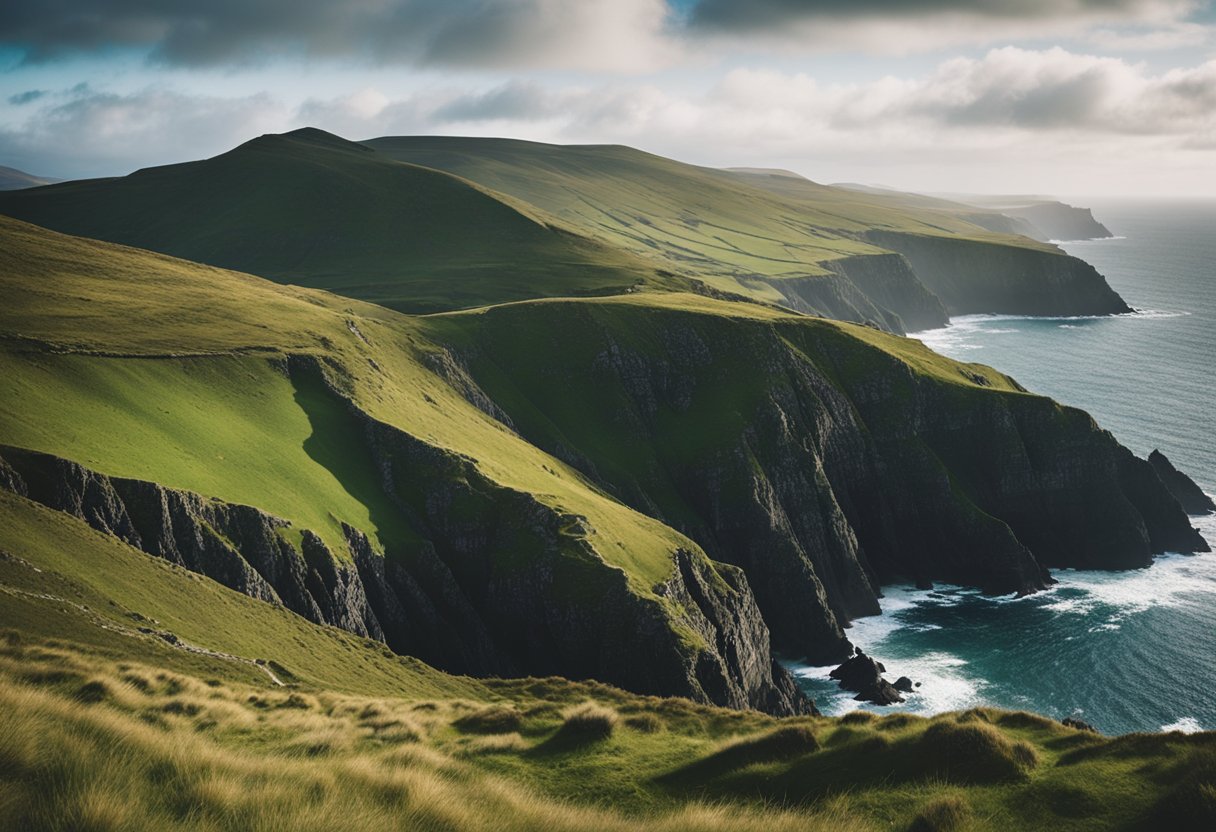
Myths serve as a profound reflection of the human experience, capturing the essence of life, death, and the transformative journey in between.
Concepts of Death, Loss, and Transformation
Death in mythology often symbolises not just an ending but a vital part of the cyclical nature of life. In Irish myths, the concept of death is often intertwined with rebirth and transformation, revealing a deep connection to the natural world. The story of the Cailleach, the divine hag of winter, personifies the transformation as she is reborn every October, bringing with her the death of the land, only for it to be reborn in spring.
Loss in these myths is a catalyst for change, serving to highlight the strength and resilience inherent in the human spirit. The famous legend of The Children of Lir speaks to this, where the loss and transformation suffered by the children invoke themes of enduring love and familial bonds despite the harshness of their fates.
The transformative aspect of myths is particularly significant in expressing ideas about life and what lies beyond. Myths like Oisín in Tír na nÓg tell of heroes venturing into otherworldly realms, encountering the spectral presence of mother figures who guide the transition between worlds.
In the aftermath of mythological events, the characters often undergo profound changes, reflecting on the changes within ourselves when we face life’s inevitable challenges. This mirrors the Irish landscape itself, always changing yet eternal, a testament to nature’s unending cycle of life, death, and rebirth.
Folklore and Environmental Consciousness
In Ireland, folklore weaves through the fabric of our everyday lives, especially evident in how we view and interact with the natural world. The preservation of our natural history and landscapes, alongside the wisdom of Mother Nature, has shaped the environmental consciousness within Irish culture.
Natural History and its Guardians
Our natural history is rich with tales of guardians—often depicted as maternal figures—who protect the land and teach us the value of conservation. These stories have ingrained an appreciation for the untouched beauty of our landscapes. Those who feel a responsibility towards the well-being of our earth, akin to the nurturing role of a mother, take these lessons to heart. They become the modern environmentalists tasked with safeguarding our hills, valleys, and waterways. Their mission is to ensure that Ireland’s natural splendour endures for future generations.
Folklore’s Influence on Environmentalism
Folklore has a powerful role in shaping environmentalist thoughts and actions. The legends tied to our past are not merely quaint tales; rather, they shape how we understand and interact with the natural world. In acknowledging the narratives our ancestors recounted about the land, we see an inherent urge to preserve what is considered sacred. This reverence is well-established by the stories steeping our landscapes in mystical significance, thus motivating us to continue their legacy as protectors of nature.
Myth and Contemporary Irish Identity
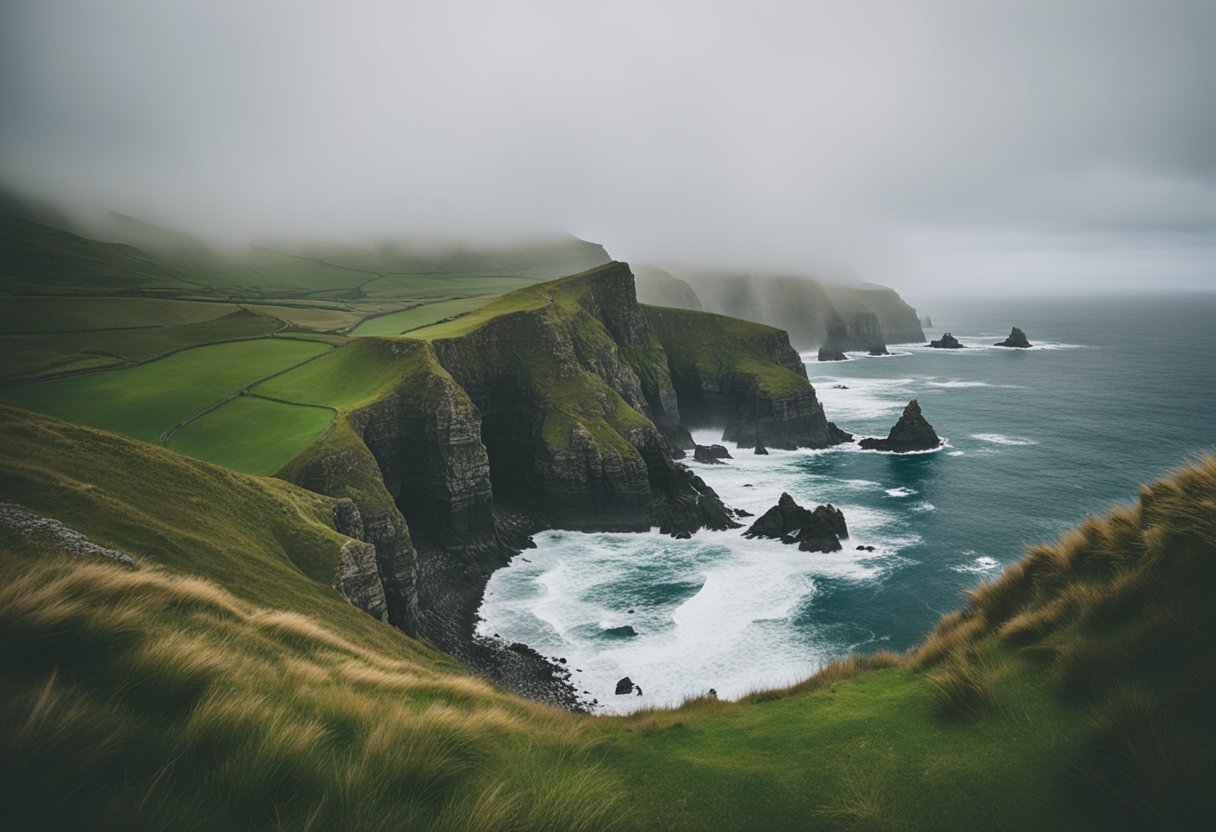
Cultural myths have long played an integral part in shaping Ireland’s national identity, intertwining historical belief systems with modern values. Our exploration here will focus on the immense impact Irish mythology has had on the cultural landscape and identity of Ireland today.
Preservation of Oral Tradition
The meticulous preservation of oral tradition has been pivotal in maintaining the liveliness of Irish mythology. Generations have relayed epic tales of the Tuatha Dé Danann and legendary figures such as Cú Chulainn, embedding a deep connection to the past within the Irish psyche. These stories, rooted in the oral tradition, have transcended time, preserving the ancient worldview and celebrating the power of the spoken word.
Shaping the Modern Cultural Landscape
In contemporary Ireland, mythology is not a relic of the past; rather, it actively shapes the cultural landscape. Symbols drawn from myths adorn public spaces and infuse local artwork, reflecting a unique blend of ancient folklore and modern Irish identity. Celebrations of Celtic festivals such as Samhain or Lughnasadh illustrate the seamless integration of past and present in Irish life. While influencing Ireland’s cultural output, these narratives also shape the nation’s worldview and have profound implications for its future.
Frequently Asked Questions
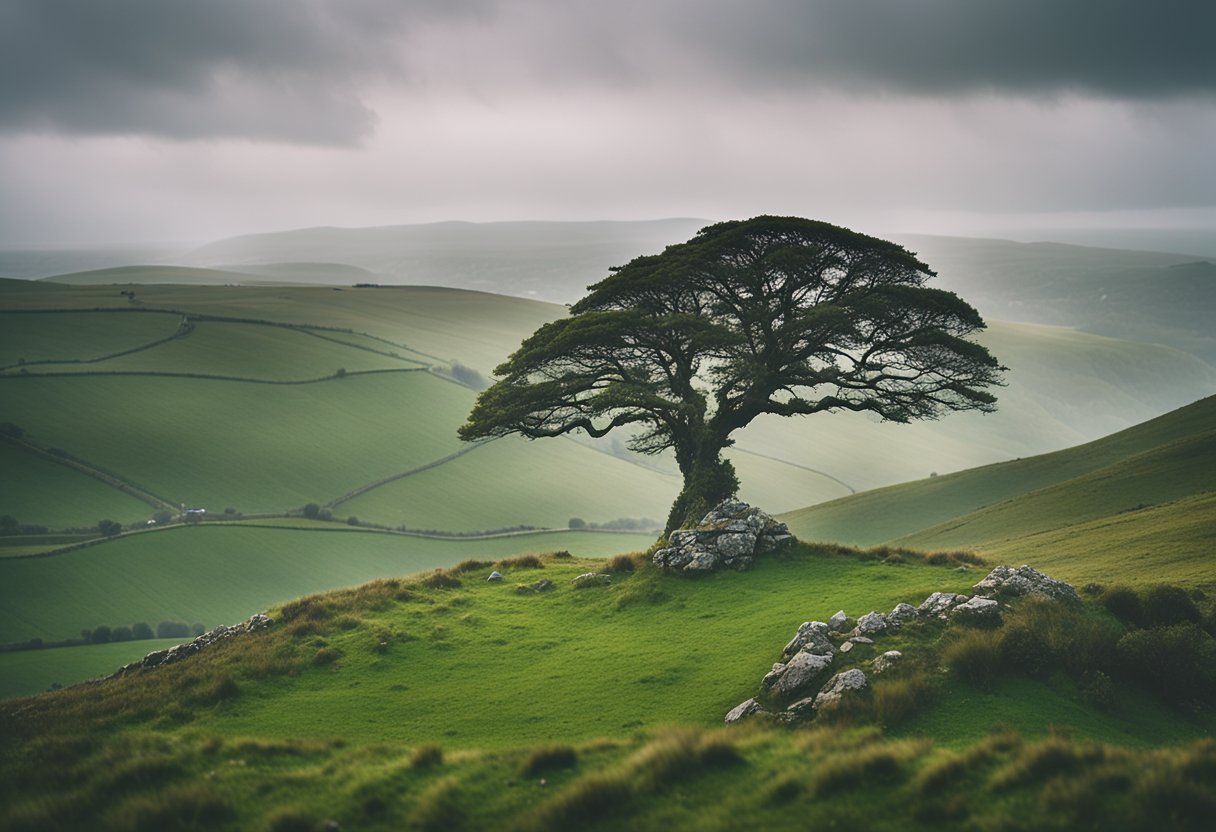
In this section, we’ll tackle some of the most common inquiries about Irish natural landscapes and their cultural myths, providing succinct and precise answers.
What do traditional Irish fairies resemble?
Traditional Irish fairies, or the ‘Aos Sí’, are thought to resemble ethereal, humanoid forms. Often described as stunningly beautiful, they are considered to be supernaturally powerful and are interwoven deeply with the natural world.
Can you list the types of Irish fae creatures?
Certainly, Ireland’s mythology includes a variety of fae creatures, such as the mischievous leprechauns, the elegant side, wailing banshees, and shape-shifting pookas. Each has its unique place and role within Irish folklore.
Which Irish myths are most renowned?
The most renowned Irish myths include the epic sagas of Cú Chulainn and the Táin Bó Cúailnge, stories of the Tuatha Dé Danann, and the mystical tale of Oisín in Tír na nÓg. These tales are steeped in magic, heroism, and the struggle against supernatural forces.
In what way do cultural myths intertwine with Irish natural landscapes?
Irish myths frequently intertwine with the country’s natural landscapes by imbuing hills, lakes, and forests with mystical significance. Legendary battles and epic tales are often set in these dramatic locales, solidifying the connection between the myths and the powerful beauty of Ireland’s terrain.
Could you describe the natural landscapes of Ireland?
Ireland’s natural landscapes are diverse and breathtaking, encompassing rolling green hills, rugged coastal cliffs, ancient woodlands, and serene lakes. The country’s natural beauty is often described as being untamed and picturesque.
What are the characteristics attributed to Irish fairies?
Irish fairies are attributed characteristics such as immortality, magical abilities, and a close bond with nature. They are also known for their elusive nature and for being occasionally benevolent or malevolent, influencing human fortunes profoundly.


